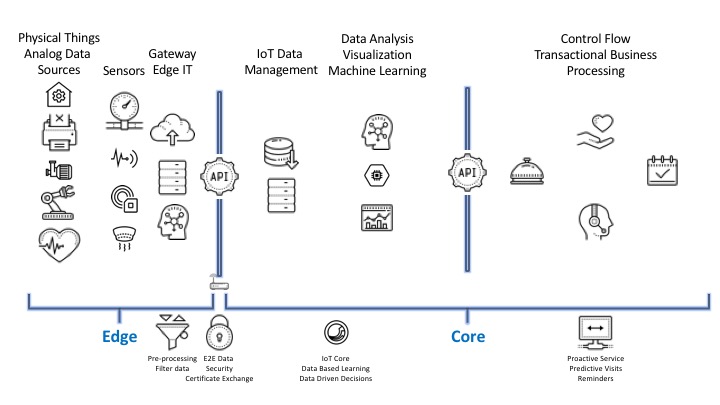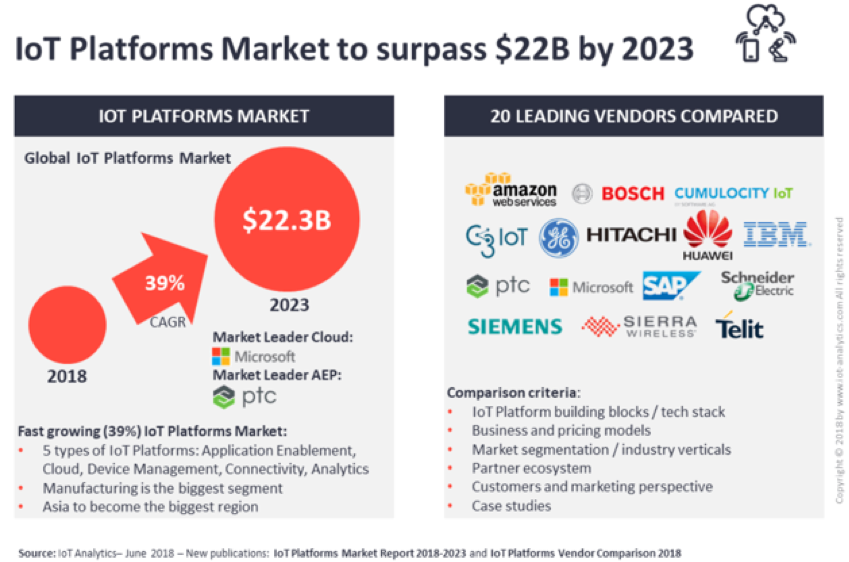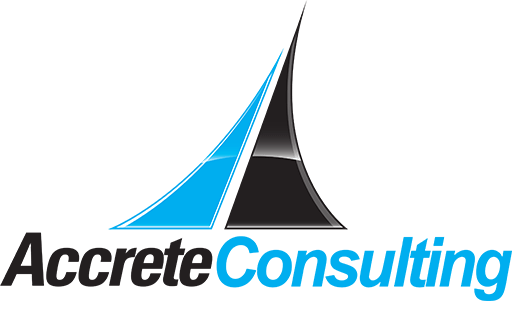Technical considerations for digital transformation, IoT and value for smart connected customer service
Following previous discussions around the business value of digital solutions for the service business, we wanted to take a closer look at the technology implications of next-generation digital solutions such as Internet of Things and smart service for equipment manufacturers.
We wanted to establish a baseline understanding with a clear architecture overview, followed by a discussion of current technology offerings within the space. Then we will discuss the approach to accelerate the road to success.
The typical IoT Architecture

The Edge
Analog data as produced by ‘Things’ (equipment, people, assets, homes, appliances, etc.) is measured by sensors and made digital by the edge computing framework. New approaches place machine learning analysis in the edge layer as part of the data pre-processing.
The IoT Core
Filtered and selected data is transferred securely to the IoT core. Data transfer is not currently standardized across the industry. A strong dependency for technical solutions lies in ensuring secure data transfer and restricting control access to assets and equipment.
Within the initial layers of the core, further data processing and rule application is done which provides the basis for the next level of ‘smart’ handling of the data by machine learning models and analytical visualization for human interpretation.
The Business Core
The resulting information can be used to generate business value by connecting to the transactional business system where alerts or service orders can be generated, part orders and planning of resources can be triggered. Feedback control information can be sent back to the ‘Thing’ to manage a status or reduce the operating risk by remotely managing the asset.
Current IoT Players and Platforms
According to Gartner, IoT Analytics and others here are the main players in the current IoT market.

Trends show a strong move towards an end to end solution platform providers supported by comprehensive cloud data management offerings. Gartner names PTC, SAP and Hitachi as the most promising IoT platform providers and AWS, Microsoft (Azure) and Google as the cloud leaders (Source: Gartner MQ IIoT Platform Providers 2/2018 and MQ IaaS 4/2018). We will take a deeper look into the different angles and offerings in our continuation of future Accrete’s Digital Service article series.
Conclusion
Companies with assets or equipment service responsibilities can quickly and significantly benefit from extending their footprint to integrate digital capabilities such as IoT, Big Data and Machine Learning using currently available technology. Many of today’s solution offerings promise a fast value realization and are focusing to resolve the most common issues of IoT: secure and standardized data flow from thing to the IoT core and integration of gathered information to the actual business flow.
Independent of which technical IoT framework you choose you will need a solid business-based design approach as provided by Accrete to enable fast and optimized returns from venturing into the exciting world of Connected and Predictive Service based on real IoT data.
